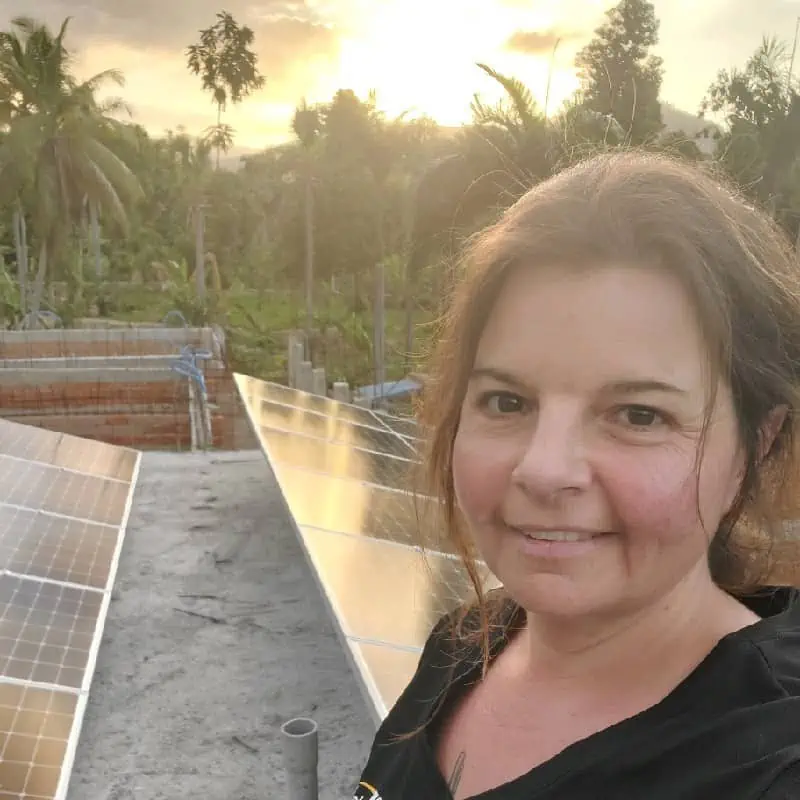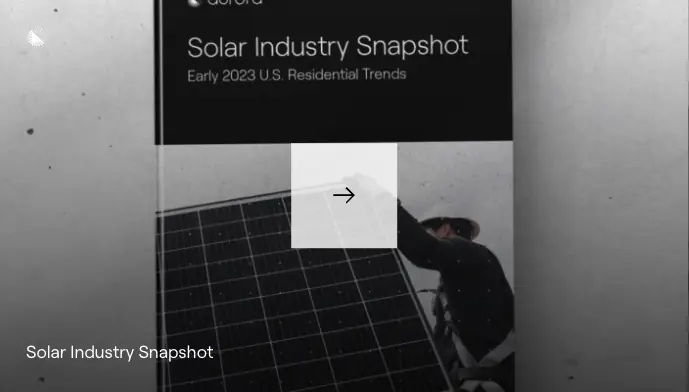The solar industry in the US has gone through its fair share of explosive growth and challenging setbacks in an ever-changing and highly-variable landscape — also known as, say it with us, the “solarcoaster”. The “solarcoaster” can be unpredictable, constantly evolving, and challenging to navigate, and every bit of information at our disposal helps.
With that in mind, as we approach the final months of 2023, it’s time to look ahead to 2024.
During Empower 2023, Carina Brockl, Acting CRO of Aurora Solar, spoke with three solar leaders from a variety of backgrounds about the opportunities and challenges they face in the solar industry today, and their thoughts on the future:
- Steph Speirs, Co-founder & CEO of Solstice Power Technologies
- Abby Buchmiller, Co-founder of RDCL Services
- Rebekah Carpenter, Founder of Fingerlakes Renewables Solar Energy
Click here to watch the entire session on demand.
We aren’t above taking advantage of an easy theme when we see one, so with Halloween approaching, in this series we’ll look at some of the “tricks” and some of the “treats” those of us in the solar industry should watch out for in the coming year. We’ll start with the “tricks” (i.e. challenges), and have the “treats” (opportunities) on Halloween.
Solar industry trends driving impact
Before we get started, let’s take a look at some of the trends affecting the solar industry right now.
Declining costs
Despite recent inflation, the overall trend in solar has always been declining prices. According to a report by SEIA, “the cost to install solar has dropped by more than 40% over the last decade.” How will we continue to make sure this trend continues?
Energy storage
As solar adoption grows — and policies change — so does the demand for energy storage solutions. Battery technology is advancing to fit this specific need.
High interest rates
With continued high interest rates, solar installers have gotten creative in selling systems and continuing to deliver ROI.
Supply chain issues
Due to a number of factors, the supply chain for solar has had its fair share of disruption. However, as we’ll discuss later, domestic manufacturers are stepping in.
Policy and regulations
Policies and regulations are continuously evolving. These include but aren’t limited to updated net metering rules, grid interconnection standards, and incentives changes.
The solar challenges (“tricks”)
These challenges, sometimes nuanced and interwoven with broader economic factors, can influence the how the solar industry grows. Let’s see what the solar leaders identified as some of the challenges they’re seeing.
(Responses have been lightly edited for space and clarity.)
Although the solar industry is still expanding healthily, Steph Speirs, Co-founder & CEO of Solstice Power Technologies, recounted how recent economic challenges have slowed project rollouts.

“There was a downturn in 2022, with less solar and wind deployed. And a lot of that was because of things that were predicted… like supply chain issues going back through COVID. But a lot of it also is just that capital is more expensive and so fewer projects are penciling out. EPC and installation costs are more expensive and interconnection and permitting is taking longer. And so, yeah, of course, it’s a tough economic environment.”
This may change, as Speirs believes that the current temporary economic setback could be overcome within the next year.
“2023 is not that much better than 2022, but 2024 could be explosive… We’re about to enter this era that’s going to be really exciting because in the last two months, a lot of guidance has come out… Low-income tax credit guidance came out in August and there’s Greenhouse Gas Reduction Fund money where applications are finally opening — that’s $27 billion that will go to local communities to build solar. There’s transferability; there’s direct paid guidance coming out. All of these are really exciting things that have a lot of opportunities attached to them, even if the economic environment could be a hindrance for the foreseeable future.”
Abby Buchmiller, Co-founder of RDCL Services, shared her insights on the current economic environment’s sweeping effects on the solar industry.

“We are seeing a lot of EPCs struggling, but I don’t believe that the challenges are entirely new. I think it’s been a very difficult time for the past few years for EPCs. And I think that we’re seeing a lot of the fallout from that, we’re seeing a lot of it come to a head… On the installation side of the industry, there are thin margins that a lot of companies are working within — there’s a very limited amount of room for error. We have industry-wide tightening from financiers, which is a necessary change, but it’s creating even more restrictions, and access to capital is becoming more and more difficult.”
Buchmiller also explained many of the constantly shifting factors that influence the already complex aspects of running a solar business.
“NEM 3.0 was a massive example of what keeps companies on their toes at all times. Shifting pipelines, lack of consistency from sales, but also where those sales are coming in and how to appropriately manage those projects based on where they’re coming in… There’s just so much complexity, and so running a company with that many points of complexity to try to manage leads you to the space where — when you have something like an economic downturn — it can really be the final straw.”
While the US has made significant strides to create a national pipeline of solar resources, Rebekah Carpenter, Founder of Finger Lakes Renewable Energy, addressed potential growing pains from an installer’s and customer’s perspective.

“Mostly material flow is what I’m thinking about. I’m really excited about the number of domestic manufacturers that are stepping in, especially in inverters, but I’m concerned about them getting products out…
Some customers are waiting for the domestic product to be produced, and some are very concerned that new production facilities will mean new levels of initial failure rates. Because that’s something that we see when there’s a new product or a new manufacturing facility — we tend to get higher failure rates for a while.”
That’s all for the tricks! Check back on Halloween to see what treats 2024 might have in store for the solar industry.
Want to see some of the homeowner and installer trends we saw in 2023? Download our free 2023 Solar Industry Snapshot.



